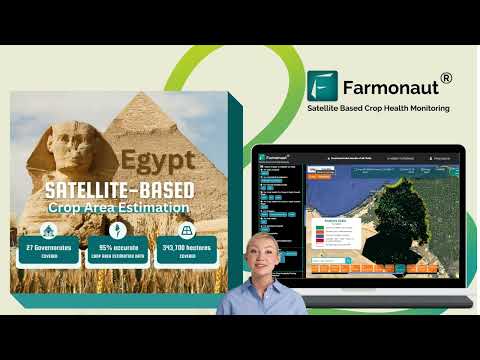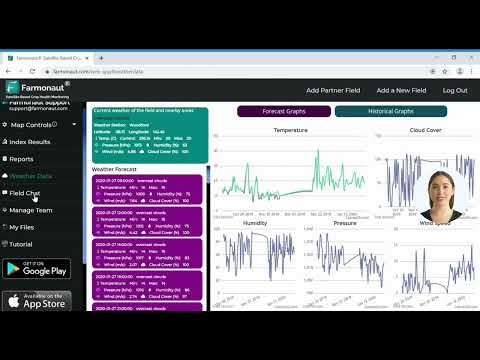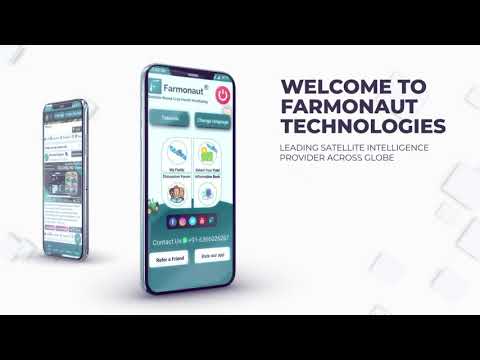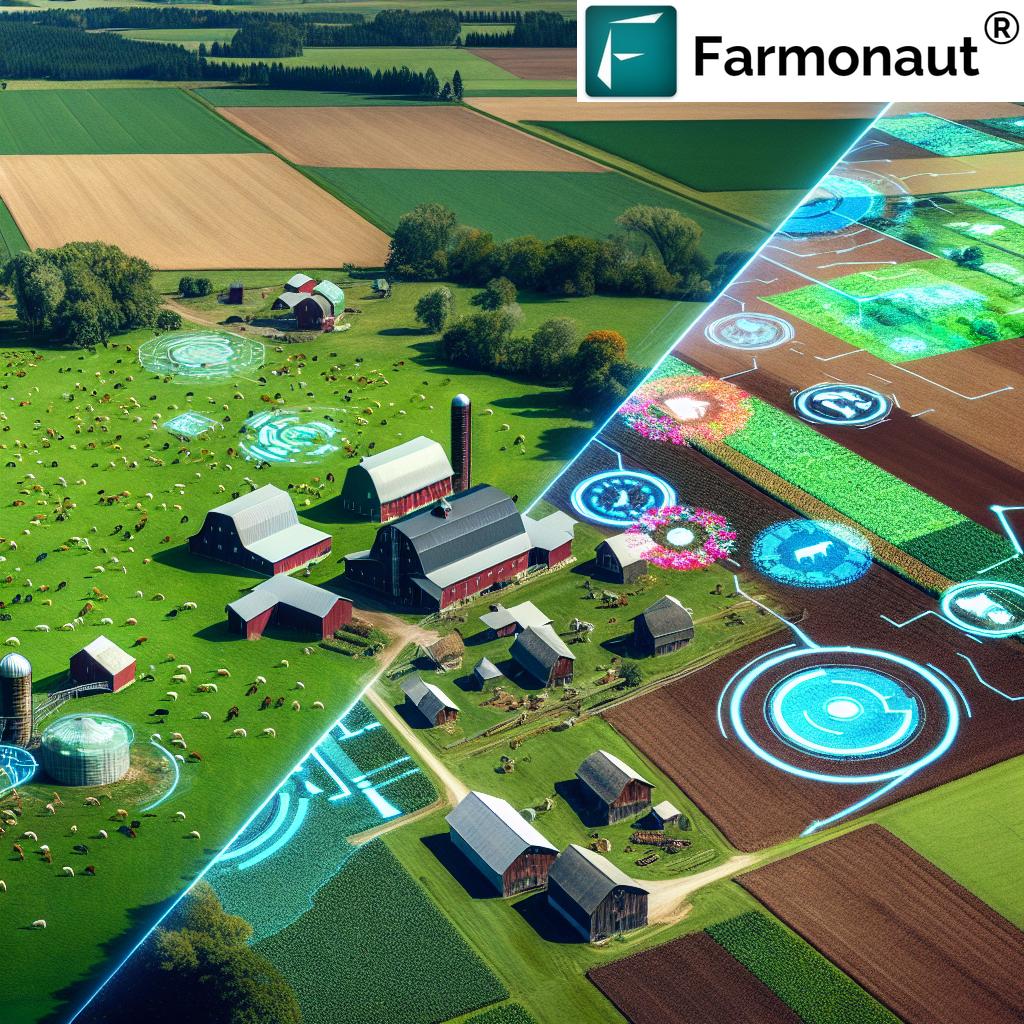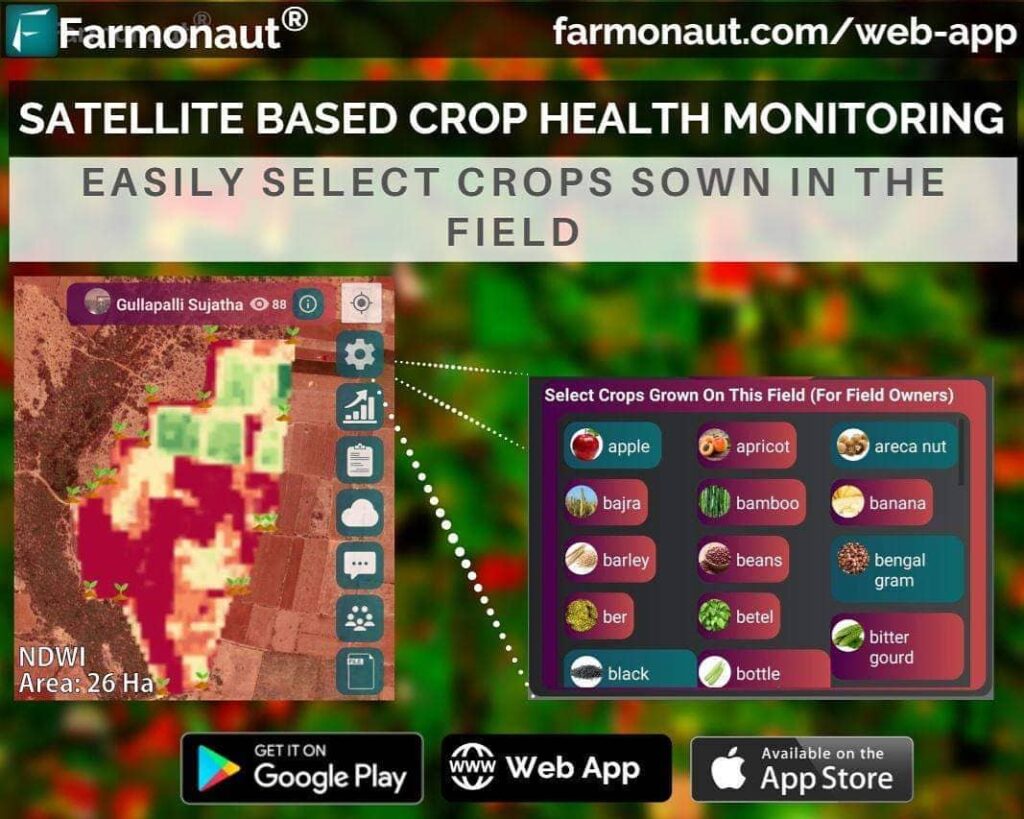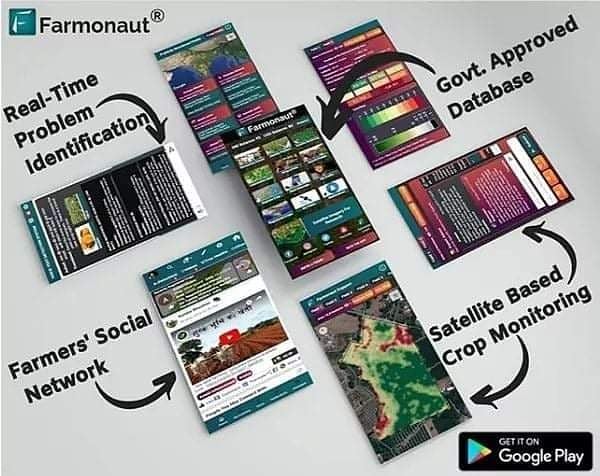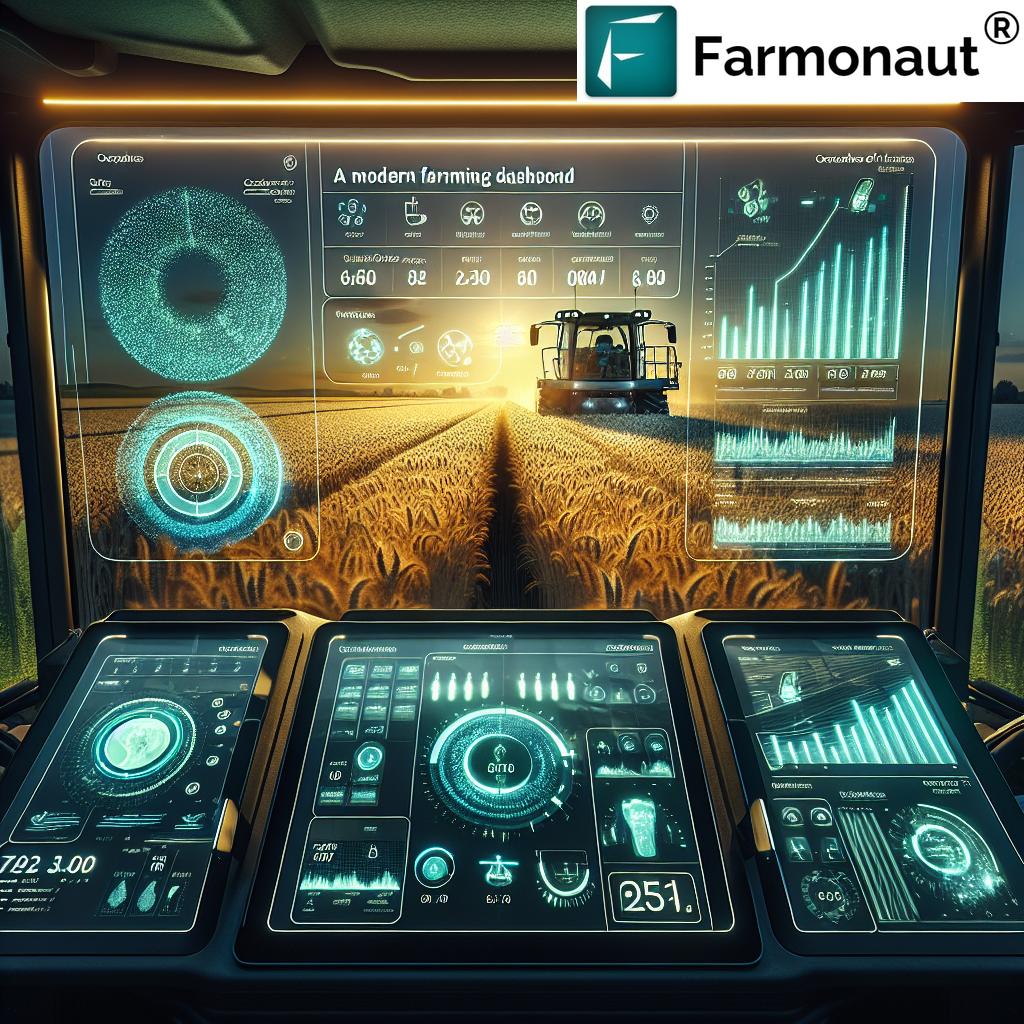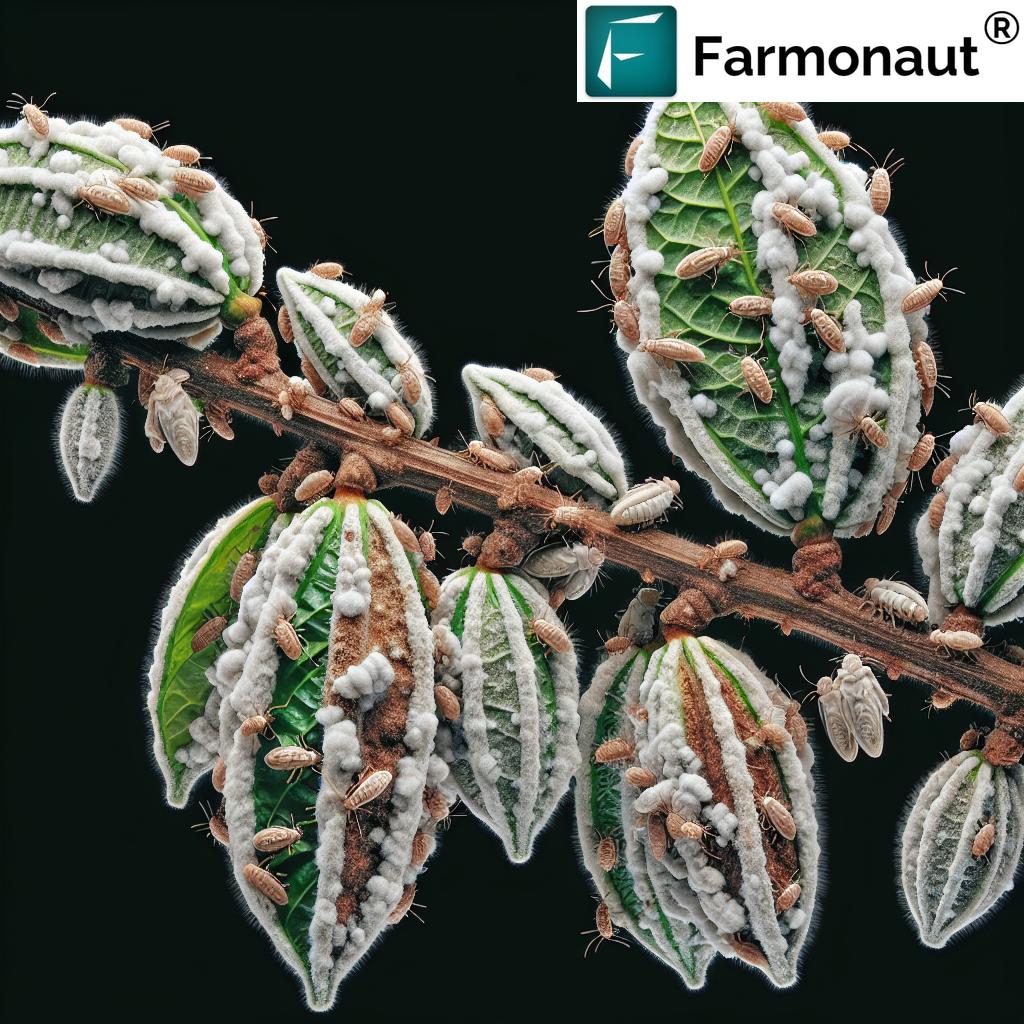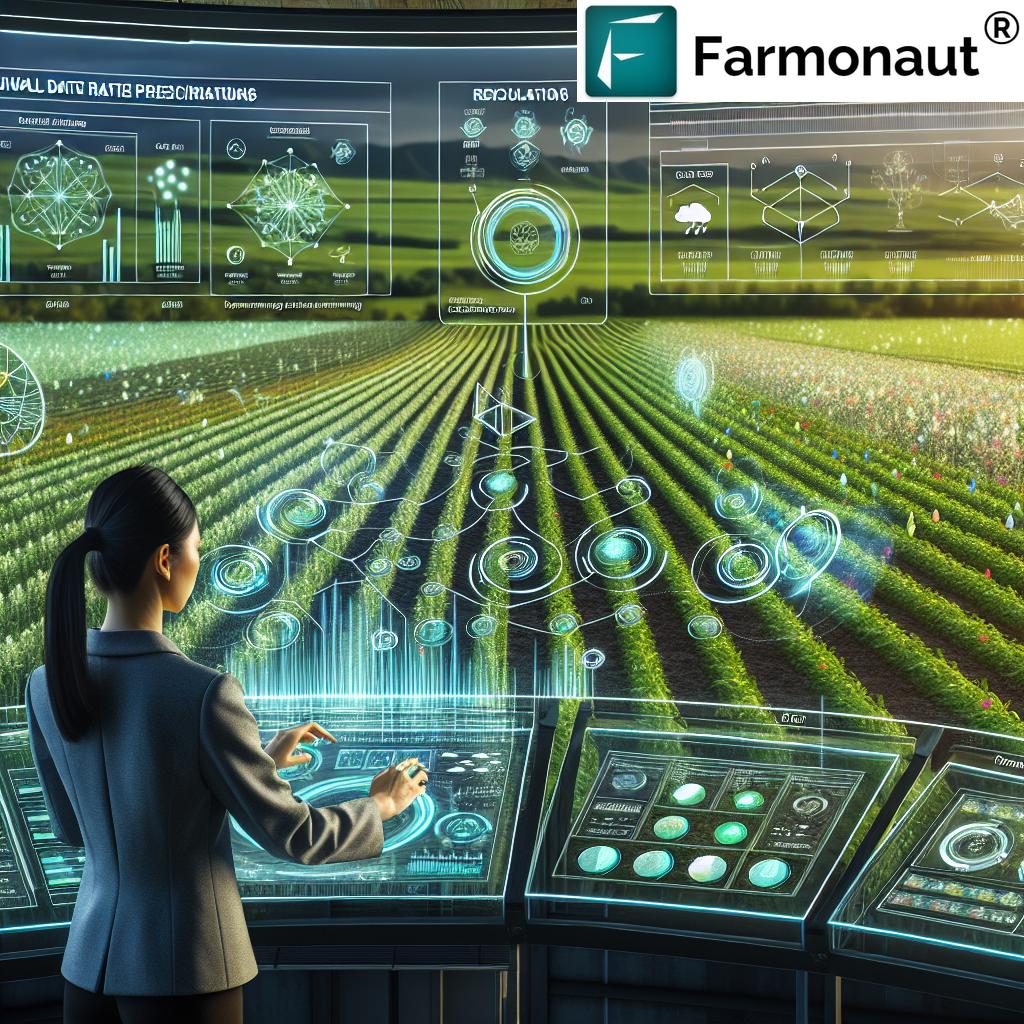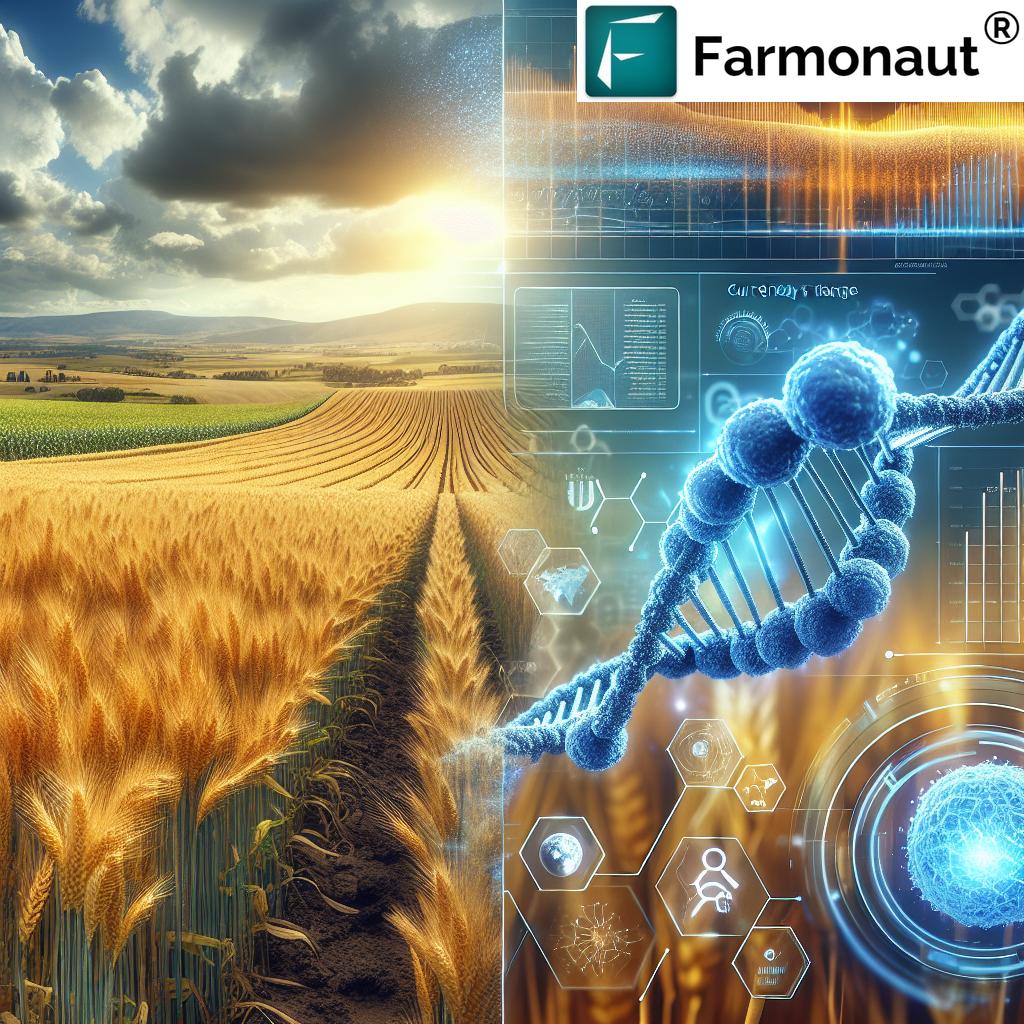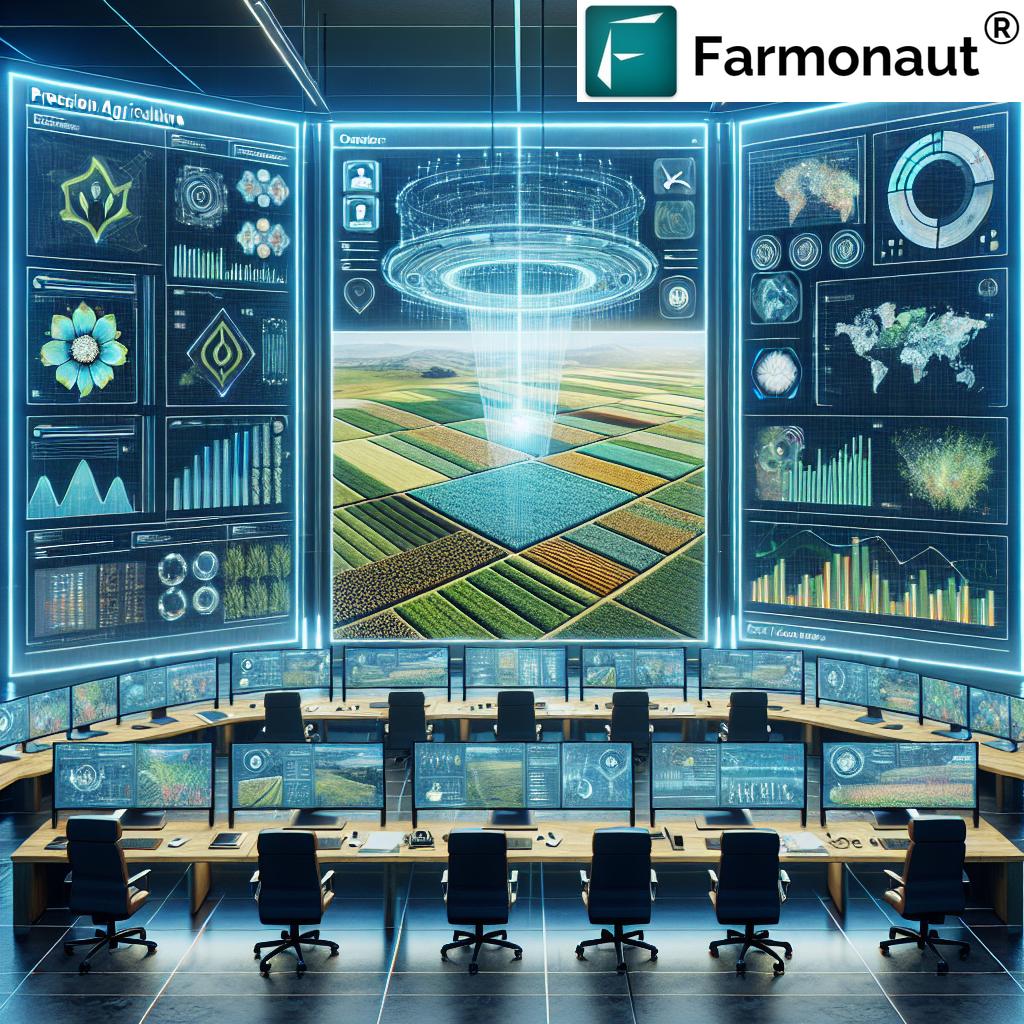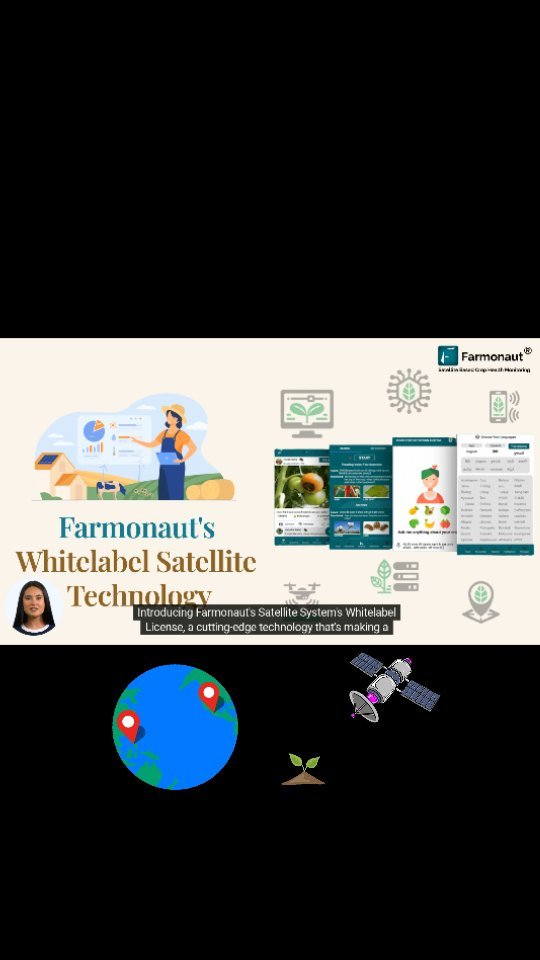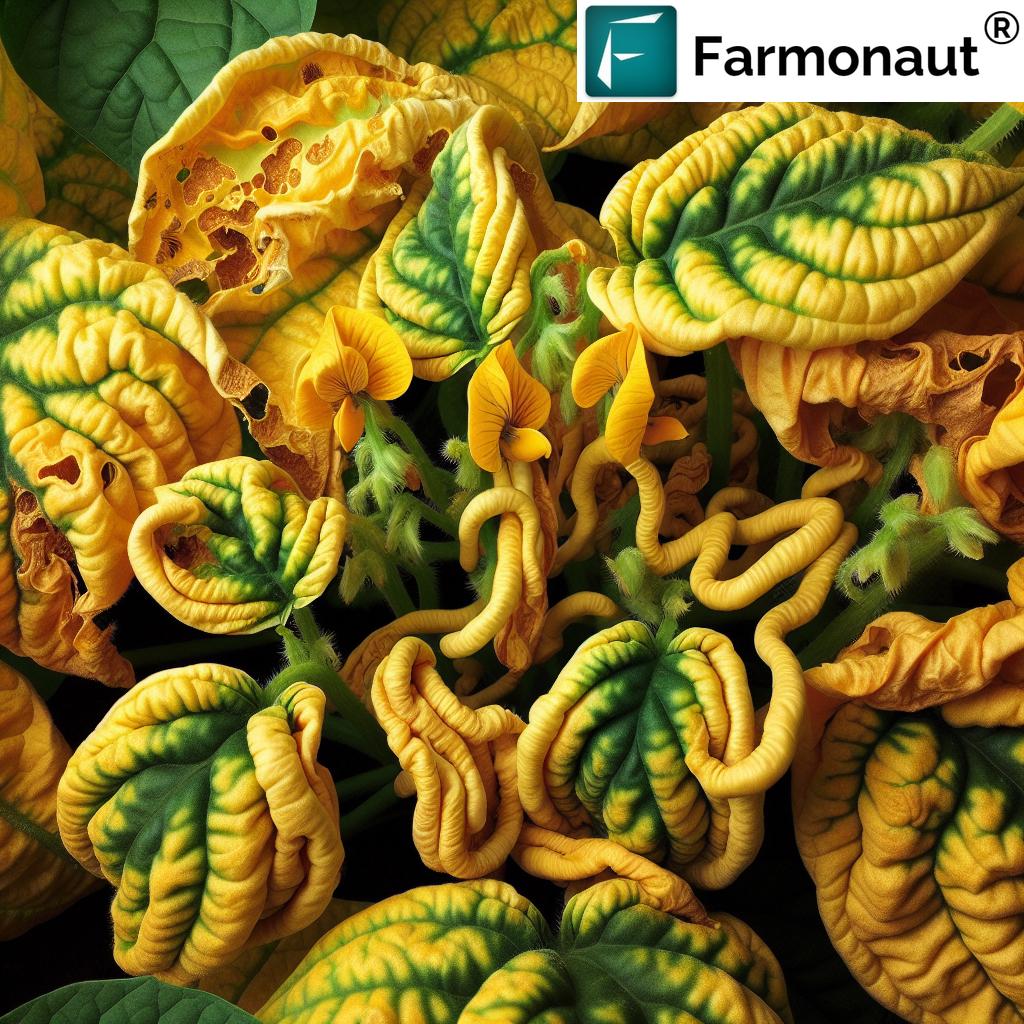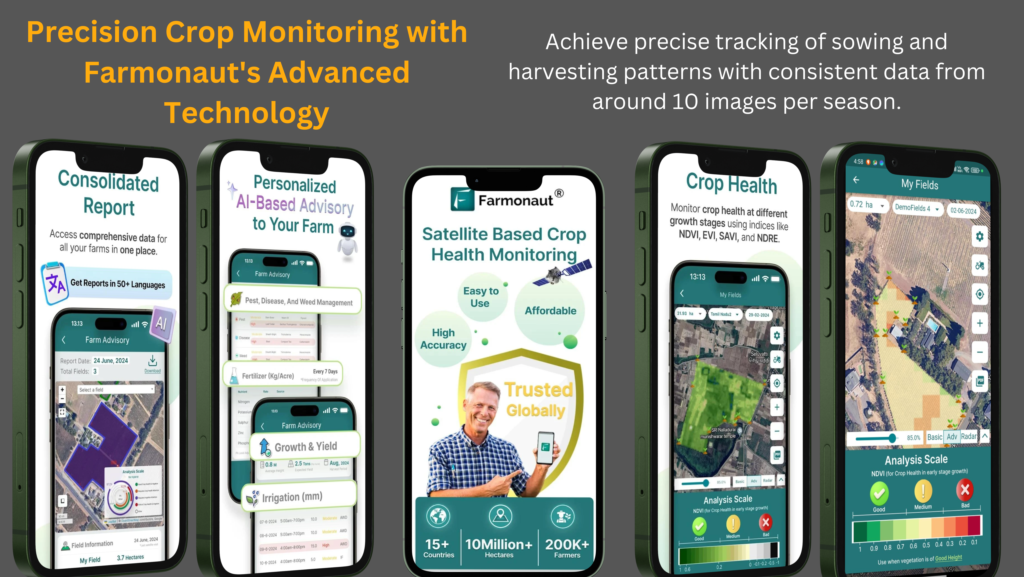Precision Farming Agriculture: 7 Tech Secrets for Huge Yields
“Precision farming can increase crop yields by up to 20% using data-driven management and GPS-guided equipment.”
Precision Farming Agriculture: Key Summary
Precision farming—also known as precision agriculture—is revolutionizing how we approach modern agriculture. By utilizing advanced technologies such as GPS, IoT sensors, drones, and sophisticated data analytics, we can monitor and manage variability down to the square meter in our fields. This enables us to optimize inputs, maximize yields, minimize waste, and support sustainable agricultural practices.
Farmonaut is a leader at this frontier, making precision farming agriculture accessible for all by harnessing the power of satellite imagery, artificial intelligence (AI), and blockchain technology—without the high capital costs of legacy equipment. On this journey, we’ll unlock seven cutting-edge secrets that elevate farm productivity, resource efficiency, and environmental stewardship.
Historical Context and Evolution of Precision Farming
To understand the transformative impact of precision agriculture technologies, it helps to trace their roots. In the 1980s, GPS in agriculture emerged as a game-changer, allowing us to map fields and record crop yields with newfound accuracy. Over the following decades, we’ve witnessed a continual evolution: integrating remote sensors, drones, advanced data platforms, and AI-driven insights into every step of the agricultural process. Now, precision farming encompasses a broad range of practices and tools—all designed to enhance efficiency, productivity, and sustainability while minimizing environmental impact.
Core Components of Precision Farming Technologies
At the heart of data-driven crop management lie several core components. These innovative technologies and devices work together to help us monitor fields, adjust inputs, and respond to variability in soil, water, nutrients, and crop health, thereby enhancing crop yields. Let’s explore each component:
1. GPS-Guided Mapping
- Usage: GPS in agriculture provides precise field location data, allowing us to map field boundaries, soil types, and yield patterns with accuracy.
- Benefits: Lays the foundation for variable rate technology (VRT), enabling efficient resource management and application of inputs.
2. Variable Rate Technology (VRT)
- Usage: VRT adjusts application rates of fertilizers, pesticides, and water according to real-time field data.
- Benefits: Reduces input waste, saves costs, and minimizes environmental impact by targeting applications to where they’re needed most.
3. Sensors and IoT Devices in Farming
- Usage: Soil and crop sensors, together with IoT devices in farming, track moisture, temperature, nutrient levels, and even equipment performance.
- Benefits: Real-time monitoring supports precision irrigation and fertilization, resulting in higher productivity and efficiency.
4. Drones and Aerial Imagery
- Usage: Drones for crop monitoring capture high-resolution aerial images, allowing us to identify pest infestations, diseases, or areas of stress early.
- Benefits: Enables targeted interventions and input applications, boosting crop health and yields.
5. Data Analytics and Machine Learning
- Usage: Advanced data analytics platforms and machine learning algorithms process readings from multiple sources, transforming raw data into actionable insights.
- Benefits: Empowers us to make better decisions regarding planting, irrigation, input timing, and resource allocation, optimizing farm yields.
The 7 Tech Secrets to Optimize Farm Yields
Let’s delve into the seven most powerful precision agriculture technologies—the “secrets” behind huge efficiency and yield gains in today’s innovative farm management.
-
GPS-Guided Tractors & Equipment
GPS guidance ensures precise field operations—from planting to application of fertilizers and pesticides. This reduces overlaps and skips, optimizing resource use and uplifts yields. GPS in agriculture has transformed tractors, sprayers, and harvesters, enabling variable-rate input and tracking field progress down to the meter.
-
Drones for Crop Monitoring & Aerial Insights
Drones equipped with multispectral cameras deliver aerial imagery that exposes variations in crop growth, health, and pest activity. Their unique vantage point allows us to identify issues early and apply targeted treatments, thus saving inputs and safeguarding maximum crop yield.
-
Remote Sensing & Satellite Monitoring
With satellite-based platforms such as Farmonaut, we use remote sensing to monitor field variability, crop stress, and soil moisture anywhere on Earth, all in real time. This scales data-driven decision making and enables farmers to address issues quickly, avoiding or minimizing yield losses. Satellite insights inform everything from planting and fertilization schedules to resource management and climate adaptation.
Explore Farmonaut’s large-scale farm management platform for advanced, real-time monitoring, resource tracking, and advisory tools that scale up precision agriculture for farms of any size. -
IoT Sensors for Soil, Weather, and Equipment
IoT sensors in farming monitor everything: real-time soil moisture, nutrient levels, microclimate conditions, and even the functional status of field equipment. By integrating sensor data with management systems, we can automate irrigation scheduling, fertilizer application, and maintenance, yielding savings and higher efficiency.
-
Variable Rate Technology (VRT)
VRT lets us apply fertilizers, pesticides, or irrigation at rates that vary across each field according to sensor-detected crop and soil need. This precision application enhances nutrient uptake, lowers input costs, and minimizes environmental waste.
Farmonaut’s carbon footprinting feature empowers you to measure and reduce environmental impact alongside resource use, supporting sustainable practices and compliance. -
Advanced Data Analytics Platforms
By aggregating data from satellites, IoT devices, and drones, modern analytics platforms turn complex information into actionable recommendations. Machine learning algorithms help us predict yields, identify disease patterns, and fine-tune timely interventions. Platforms such as Farmonaut offer customizable dashboards with satellite-based crop health and weather analytics accessible from any device.
Leverage Farmonaut’s fleet and resource management tools to streamline logistics, cut operational costs, and keep your farm machinery operating efficiently—all driven by data. -
Blockchain-Based Product Traceability
With blockchain integration, we can ensure traceability at every step of the supply chain. Consumers and processors access verified records of a crop’s origin, handling, and journey—building trust, reducing fraud, and unlocking opportunities for premium-market access.
Farmonaut’s traceability solution brings transparency and verification to complex agri value chains, a major leap for modern agricultural businesses.
“Farmers using precision agriculture reduce fertilizer use by as much as 30% through targeted application and real-time field monitoring.”
Precision Farming Technologies: Features & Estimated Yield Benefits
| Technology | Main Function | Estimated Yield Increase (%) |
Resource Savings (%) | Impact on Sustainability | Example Application |
|---|---|---|---|---|---|
| GPS-Guided Tractors | Automates and optimizes field operations (planting, spraying, harvesting) | 10–15% | 7–14% | Reduces fuel and chemical usage | Straight-line planting, overlap reduction |
| Drones | Aerial crop monitoring, field scouting, targeted spraying | 8–12% | 10–25% | Early detection, reduced pesticide use | NDVI mapping, pest/disease ID |
| Remote Sensing (Satellite) | Large-scale crop health & soil condition monitoring | 8–18% | 10–20% | Informs sustainable input timing | Farmonaut’s crop health, irrigation alerts |
| IoT Sensors | Real-time measurements of soil, water, weather, and equipment | 7–14% | 15–21% | Prevents over-irrigation & nutrient leaching | Soil moisture probes, smart irrigation |
| Variable Rate Technology (VRT) | Field-specific input application (fertilizer, pesticide, seed) | 12–20% | 18–31% | Reduces over-application and runoff | Rate-controlled fertilizer spreaders |
| Satellite Imaging Platforms | Detailed, regular field imaging for analytics and alerts | 15–20% | 12–17% | Supports eco-friendly interventions | Farmonaut satellite analytics app |
| Data Analytics Platforms | Aggregates, analyzes, and visualizes multi-source farm data | 11–20% | 8–19% | Automates decision-support for sustainability | Farmonaut web/mobile analytics suite |
Note: Actual yield and savings depend on crop, region, and implementation quality. Data sourced from public research and Farmonaut’s technology documentation.
Farmonaut’s Platform: Democratizing Precision Agriculture with Advanced Technologies
Farmonaut empowers individual farmers, agribusinesses, governments, NGOs, and corporate buyers worldwide by making advanced precision agriculture affordable and accessible. Integrating satellite-based systems, AI, blockchain, and machine learning, Farmonaut’s solutions drive efficiency, transparency, and sustainability in farming operations of every scale.
- Satellite-Based Crop Health Monitoring: Multispectral imagery reveals real-time crop health, fine-scale field variability, and soil moisture. This streamlines irrigation, fertilization, and pest management for optimal yields and reduced resource waste.
- Jeevn AI Advisory System: Provides personalized, real-time farm advisory—including weather forecasts, actionable insights, and expert strategies for crop management—powered by AI-driven analytics.
- Blockchain Product Traceability: Every point from planting to delivery is securely recorded, giving producers, buyers, and consumers confidence in product authenticity. Learn more about Farmonaut’s full-featured traceability solution.
- Fleet & Resource Management: Tools help agribusinesses coordinate equipment, logistics, and maintenance efficiently. Explore Farmonaut’s resource management features here.
- Carbon Footprinting: Track and minimize your environmental impact with real-time carbon footprint assessments.
- API Integrations: APIs allow seamless integration of satellite and weather datasets into your own farm management or research systems. Visit the Farmonaut API portal or review developer documentation.
- Mobile and Web Access: Farmonaut platforms are available via Android, iOS, and browser/web apps, delivering insights straight to your device. Interested in satellite-based crop plantation advisory? Get Forest and Plantation Expert Advisory now.
Benefits of Precision Farming: Efficiency, Sustainability, and Profitable Yields
Adopting precision agriculture offers a multitude of advantages:
- Increased Efficiency: By applying inputs precisely where and when they’re needed, we reduce waste and operational costs. Variable rate technology ensures nutrients and water are only applied to deficient areas, boosting yields and resource use.
- Environmental Sustainability: Reduces the use of chemicals and water by up to 30%, cutting runoff and promoting sustainable practices. For farmers, this means healthier soils and ecosystems.
- Enhanced Crop Health and Yield: Early detection of pest infestations, nutrient deficiencies, or disease allows for prompt, targeted intervention—ensuring healthy, uniform crop growth for maximum yield potential.
- Cost Savings: Efficient, data-driven resource allocation means lower spending on fertilizers, pesticides, irrigation, and fuel. Over time, these savings build up, directly impacting farm profitability.
- Transparency and Consumer Trust: Blockchain-backed traceability solutions secure the integrity of supply chains, essential for growers in quality-verified or export markets.
- Better Access to Financing: Satellite-based verification provides transparent, robust evidence for lenders, streamlining crop loan and insurance approval while lowering fraud.
Challenges and Considerations in Precision Agriculture Implementation
- High Initial Investment: Traditional hardware-heavy systems require substantial capital outlay (machinery, sensors). However, Farmonaut provides affordable, satellite-based solutions that democratize access to precision tools.
- Data Management & Technical Skills: Modern precision farming generates vast amounts of data. Farmers require robust digital platforms, reliable connectivity, and a minimum level of technical expertise for interpretation and action.
- Connectivity Barriers: Without stable internet access, real-time field monitoring and rapid response may be limited in some regions.
- Change Management: Shifting to data-driven agricultural management involves retraining, process updates, and change acceptance from all stakeholders.
Future Trends in Precision Farming & Innovative Technologies
- AI and Automated Decision-Making: Deep-learning algorithms and AI will increasingly drive predictive analytics, pest identification, yield forecasting, and even automated field operations.
- Autonomous Robotics: From planting to harvesting, advanced robots will undertake repetitive farm tasks with minimal supervision, boosting efficiency further.
- Enhanced Cloud Connectivity: Wide adoption of cloud-based data sharing will empower collaboration between farmers, agronomists, and researchers, allowing for tailored regional solutions and rapid best-practice dissemination.
- Affordable Satellite & Sensor Coverage: Companies like Farmonaut lower barriers to entry, making next-generation precision agriculture viable for smallholders and mega-farms alike.
- Real-time Sustainability Metrics: With integrated carbon footprinting and resource calculators, sustainable practices and compliance will become part of every farm’s daily routine.
Frequently Asked Questions (FAQs) About Precision Farming Agriculture
What is precision farming and how does it differ from traditional agriculture?
Precision farming—sometimes called precision agriculture—uses advanced technology (e.g., GPS, sensors, drones, satellite imagery, AI-driven analytics) to manage fields and crops at a fine scale. Instead of applying identical inputs everywhere, we tailor our interventions to the exact needs of each location, saving resources, boosting efficiency, and optimizing yield while reducing environmental impact.
Can small-scale farmers benefit from precision agriculture?
Absolutely. With platforms like Farmonaut providing affordable, satellite-based monitoring and real-time data to any scale of farm, precision agriculture technologies are now accessible to smallholders as well as large agribusinesses.
What kind of data is collected in precision farming?
Crops, soils, and environmental data: Satellite and drone imagery, soil moisture and nutrient levels, weather information, pest and disease detection, yield monitoring, input usage records, vehicle and equipment status—all may be recorded, processed, and visualized on a platform like Farmonaut.
How does precision agriculture help sustainability?
By optimizing inputs (water, fertilizers, pesticides) and targeting interventions, we can maintain or increase crop yields while lowering emissions, runoff, resource waste, and long-term soil depletion. Tools like Farmonaut’s carbon footprinting make sustainability quantifiable.
What is data-driven crop management?
Data-driven crop management refers to using real-time, field-specific data (soil, crop, weather, etc.) to make timely, precise decisions on planting, irrigation, fertilization, pest control, and harvesting. This ensures resources are allocated where and when needed, maximizing returns and minimizing risks.
How does variable rate technology (VRT) work?
VRT uses field data (soil tests, crop sensors, satellite imagery) to control the application rate of inputs. Equipment or machinery with VRT can automatically adjust amounts—fertilizer, pesticide, water—applied to different parts of the field, based on the needs detected, thus reducing costs and improving yield.
How does Farmonaut support crop loans and insurance?
By providing satellite-based verification of crop area, condition, and yield estimates, Farmonaut helps streamline crop loan approvals and minimizes fraudulent insurance claims. Lenders benefit from reliable, remote monitoring, while farmers gain quicker access to financing. Learn more here.
Conclusion: Precision Farming—The Future of Productive and Sustainable Agriculture
Precision farming agriculture is more than a trend; it’s a transformative shift in how we approach global food production, profitability, and environmental responsibility. By leveraging a suite of advanced tools—from GPS, drones, and sensors to AI and satellite analytics—we optimize every aspect of farm management, achieving impressive increases in efficiency and yields while minimizing waste.
Platforms like Farmonaut are making precision agriculture accessible to all, regardless of farm size or location. Affordable, satellite-driven and highly scalable, these technologies are not only about productivity—they are catalysts for transparency, sustainability, and global food security.
As the agricultural landscape continues to evolve, staying at the forefront of data-driven crop management, real-time analytics, and resource optimization is essential for future-ready farming. The journey toward smarter, more efficient, and eco-friendly fields is here—and with the right tools, every grower can be a part of it.





